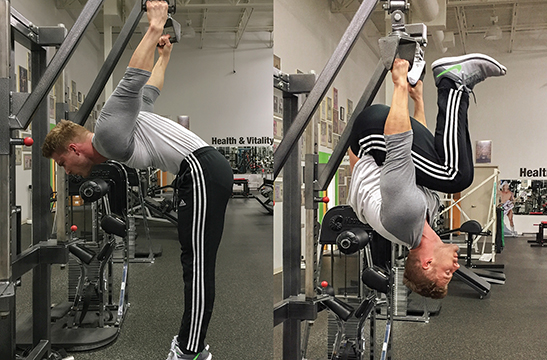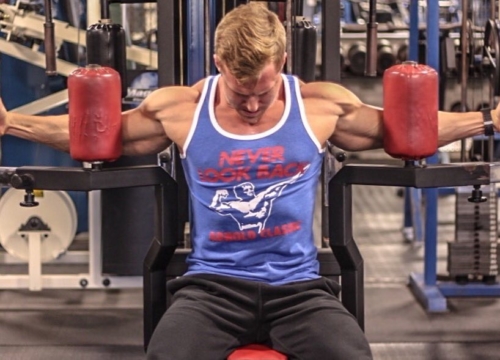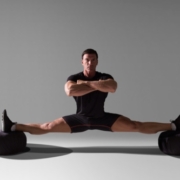Tight muscles can generate pain, impair performance, and lead to a host of musculoskeletal problems; or so we’re taught. As a Physical Medicine and Rehabilitation physician, stretching for tightness is a topic of discussion as common among patients and practitioners in my field as perhaps statins for heart disease in the realm of primary care. The problem with stretching “tight” muscles, however, is that it doesn’t work (I’ll leave statins for a future article). It’s a paradigm that is fundamentally flawed. Muscles aren’t actually tight, and stretching (done in the conventional way) doesn’t make them any looser.

There is a bit of semantics involved here but the word “tight” is not a mechanical term and is therefore of limited use when describing the properties of tissue. While most tend to imply a restricted range of motion in which a joint can assume a limited number of positions, “tight” offers no definitive description of the dysfunction. Some suggest that such restriction is related to structurally shortened muscles. As it applies to the biomechanical properties of the involved tissues, however, the reason for restriction is less about length and more accurately related to compliance and tissue tolerance.
In other words, your ability bend over and your toes is not predicated on the length of the hamstring muscles as much as it is on whether your brain will allow you to do so – whether it will tolerate that position.
Confused? Read on.
Some studies have in fact shown a sustained increase in muscle length after stretching that muscle for a given period of time. Most of these studies, however, have involved anesthetized subjects, either human or rats, or have been performed with isolated muscle models in which rats are sacrificed and all other structures are stripped away, leaving only the muscle of interest to be examined.
The problem with these study designs is that the neurologic control of the muscle is eliminated, which is much like studying how far cars might roll without the influence of drivers or brakes. Though perhaps allowing for interesting observations, the practical implications are rather limited.
Muscles are ultimately governed by the neurologic system. Our brains tell our muscles to move, and our muscles are under constant surveillance by various neurologic mechanisms that are designed to insure proper function and safety of the moving parts. If the body senses an unfamiliar position as mine might during an attempt to do the splits, various stretch receptors send out signals that prevent further movement in the direction of the new and potentially vulnerable position. The body doesn’t understand it so it doesn’t want to go there. This serves as an important protective mechanism that is designed to prevent tearing of tissue and compromise of system integrity. In this way, decreased muscle compliance isn’t a musculoskeletal problem but rather a problem of the neuromuscular system. Essentially, the nervous system ‘thinks’ that the muscles aren’t strong enough to maintain the regulation of force transmission throughout the body in the new position so it, in combination with the muscle, won’t comply with the attempted movement. Rather, it will want to stop short of the new position because that is what’s familiar and perceived to be safer. Whatever the position, the nervous system continually asks, “Can I be safe there?”

Beyond the neurological influence, an understanding of the tensegrity model of body structure should also be considered in an effort to better understand biomechanics and the role of stretching. Imagine first the human skeleton – the bones representing the foundational bricks of our bodies, which hold up the individual muscles that attach to them and create movement. Now abandon that relatively rigid and myopic visual image. Instead, imagine a network of muscles and connective tissue in which the bones float. This model, one of floating compression, most accurately represents how the body functions as a whole. Rather than being a summation of independently operating parts, our bodies are dynamic systems of interwoven and communicating units working together in synchrony. Muscles are imbedded in connective tissue such that our entire body “suit” is involved in movement and force transmission. Even when a muscle is relaxed, it exerts force radially to the surrounding tissue structures. This is yet another reason why the study of isolated muscular structures does not accurately represent what occurs as each of us performs a stretch.
So where do we go from here?
We need to disenthrall ourselves from the idea that stretching a muscle longer and harder will ultimately lengthen it. It won’t. It will only risk damaging it.
Instead, we should start with the idea that increasing range of motion is accomplished by using our bodies within that range and by placing the muscles under load. As in the case of lifting weights, one might use a light load to engage their terminal range of motion in a particular exercise, gradually increasing the load over time. A focus on flexing the muscle forces the muscle fibers to communicate with the nervous system. The result is that the muscle develops strength and control throughout the positions in which it is used, and the brain begins to learn that it can allow movement through that range of motion without risking injury.

What naturally follows is the somewhat counterintuitive recognition that for optimal range of motion, we desire strength and stiffness of the muscles and connective tissue. Tissues can be strong and stiff, yet compliant. The body favors strong and stiff to weak and loose because it reduces the risk of injury. The key, however, is that the body needs to be strong and stiff (albeit compliant) in every direction. As described above, any motion imparts force throughout the entire system. If there exists a weak and loose link, the system is subject to injury and dysfunction. Deficiencies are common, as individuals tend to develop imbalances given their habitual movement patterns. Whether always bending to the same side to pick up objects from the floor or stressing particular movements more than others in the gym, repetitive and unbalanced movement patterns fail to develop strength and stiffness in every direction.
What else? Practice pandiculation. Though it might be an unfamiliar term, you’ve done it before. You wake, pull your arms and legs inward, begin to yawn, reach your arms overhead, extend one leg, and then the other. The muscles are contracted and slowly lengthened, followed by complete relaxation. Many other animals do the same. When your dog arches its back then drops its belly, curving downward as it lengthens its legs and back – that’s pandiculation.
The contraction allows for the muscles to be sensed or ‘felt’ by the brain, resulting in complete conscious control and allowing for a slow, intentional decrease in the level of contraction during the lengthening phase. This conscious control represents an opportunity for the brain to learn and results in a fortification of the neuromuscular connection.
The process of pandiculation can be applied to nearly any movement.
Considering everything that we’ve examined thus far, a natural question arises: With sufficient training, would it be possible for anyone to perform the splits? Not by any ‘stretch’ of the imagination. Muscular units can certainly be trained but bony limitations remain. Whether you’ll be able to do the splits depends on, among other things, the shape of the femoral neck, the angle at which the femoral head is inserted into the hip socket, and the orientation of the hip socket. The bony anatomy of the hips also partially determines whether someone will be able to assume a deep squat position. Individuals of Polish descent, for example, typically have shallow hip sockets, which allows for a significantly greater range of motion in the squatting position than those with deeper hip sockets.
So perhaps it’s time to rethink the stretching paradigm, putting the muscles to work and engaging the brain in more dynamic activity. As always, let us know your thoughts!


